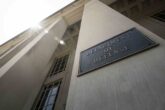May 30, 2019
F-15EX and F-35A: The Future of American Air Superiority
When the Air Force chief of staff and secretary confirmed that the service’s budget request for Fiscal Year 2020 would include money for F-15EX aircraft, they kicked off a massive debate among airpower strategists and defense planners. Many arguments against the F-15EX focus on the need to invest in fifth-generation aircraft, specifically highlighting the F-35A, and the advantages of stealth and advanced sensors to counter Russian and Chinese threats. On the other hand, Air Force and Department of Defense leaders have focused on the need to maintain fighter capacity and keep costs down.
While interesting, the conversation isn’t addressing the deeper problem: the deterioration of the Air Force’s F-15C fleet and potential gaps in fulfilling key air superiority missions. This should not be a discussion specifically about whether the F-15EX or the F-35A is a better weapon system. Rather, discussion should focus on how to best meet airpower demands given finite resources and an F-15C fleet well past its service life and in need of considerable investment to continue flying. The Air Force, Department of Defense, and Congress should not miss the opportunity to utilize the FY20 budget to invest in a solution.
This article outlines the need for dedicated air superiority fighter aircraft and explores four options to sustain this critical capability over the next 20 years. Ultimately, new aircraft will return on investment by divesting the F-15C. The proper mix of fourth- and fifth-generation aircraft will provide the most lethal and cost-effective force using the distinct advantages of each while guarding against inherent design weaknesses of either.
Read the full article in War on the Rocks.
Image credit: U.S. Air Force/Samuel King Jr.
More from CNAS
-
Defense / Transatlantic Security
When Defense Becomes Destruction: Austria-Hungary’s Mistake and Ukraine’s RiskThis article was originally posted on War on the Rocks. The southeastern Polish city of Przemyśl, with its elegant 19th century Habsburg-era train station, remains one of the ...
By Franz-Stefan Gady
-
Defense / Transatlantic Security
Ukraine’s Catch-22 MomentThis article was originally published in the Financial Times. In Joseph Heller’s wartime classic, Catch-22, the protagonist Yossarian seeks out the US army surgeon Doc Daneeka...
By Franz-Stefan Gady
-
CNAS Insights | Budgetary Own Goals Undermine “Speed and Volume”
On November 7, Secretary of Defense Pete Hegseth laid out a plan to overhaul the Department of Defense’s (DOD’s) acquisition system. Placing an emphasis on delivering new capa...
By Philip Sheers, Carlton Haelig & Stacie Pettyjohn
-
Drones: Who Is Making the New Weapons of War?
From Ukraine and Russia to Gaza and Sudan, drones have become a key weapon of war. Which companies are making them, and profiting from this rapidly expanding but controversial...
By Stacie Pettyjohn




